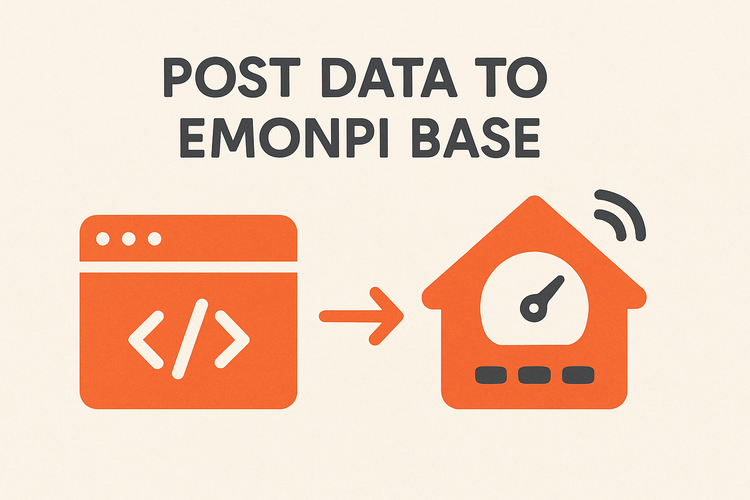How To Post Data To Emonpi Base

Understanding the Role of Post Bases in Structural Integrity
Post bases are critical components when it comes to anchoring timber posts securely to concrete or other masonry bases. Their primary role is to prevent wood-to-concrete contact, minimizing moisture damage and decay over time.
Available in various configurations, post bases offer solutions for both light-duty and heavy structural applications. They're especially essential in environments where posts are exposed to outdoor conditions or moisture-prone locations. Galvanised and stainless steel options enhance corrosion resistance, making them reliable over extended periods. When selecting a post base, it's important to consider both the environmental exposure and the load requirements of the structure. This will ensure optimal strength, durability, and alignment of timber columns.
Many professional builders rely on post bases from trusted suppliers for structural applications ranging from decks and pergolas to large timber-framed buildings. In cases involving seismic or high-wind areas, enhanced models provide additional lateral stability, preventing uplift. Timber construction benefits significantly from well-chosen foundation elements like post bases that distribute vertical and lateral loads into the supporting concrete slab or pier foundations.
Secure integration of timber elements with the foundation is where post bases shine. These units often feature pre-drilled holes for easier installation and can be adjusted to suit a variety of timber dimensions. For applications combining modern engineered wood systems like Glulam timber, precise compatibility with post bases becomes paramount for long-term load stability.
The Evolution and Application of Timber Frame Connectors
Timber frame connectors provide strong, predictable joining methods for load-bearing timber structures. Their growing popularity stems from advancements in architectural design and engineered timber products.
These connectors are engineered to meet modern safety and strength standards while enhancing the efficiency of timber construction. They simplify the connections between beams, posts, rafters, and header systems. For example, custom-configured connectors help optimize joint strength while reducing installation complexity. Options include concealed hangers, saddle beams, and angled ties designed specifically for prefab timber components.
These framing solutions support both contemporary and traditional designs, making timber frame connectors valuable for residential, commercial, and public structure applications. A well-placed connector minimizes timber deflection over time, counters lateral loads, and ensures proper load transfer. Whether constructing a multilevel building or a modest garden structure, the reliability of timber jointing systems greatly impacts longevity.
Proper selection allows for integration across a variety of construction systems, including hybrid setups that employ cross laminated timber. Timber frame connectors have facilitated new approaches in modular and sustainable building by improving structural integrity without compromising design versatility or installation speed.
The fasteners used in tandem with these connectors—typically corrosion-resistant screws and bolts—also play a significant role. To ensure long-lasting, weather-resistant connectivity, these hardware choices must align with both local building codes and environmental demands.
Advantages of Using Engineered Timber Connectors
Prefabricated and engineered timber connectors offer numerous advantages in construction speed and consistency. They ensure precision during installation and mitigate common errors related to on-site cutting or drilling.
A notable benefit is the reduction in skilled labor time, which is often a major cost factor in timber builds. Because these connectors are pre-manufactured to specific tolerances, contractors can rely on precise alignment without needing redundant verification. This consistency improves both timelines and safety outcomes. In high-wind or seismic-prone areas, using specially engineered connectors also offers compliance with rigorous code requirements, improving long-term performance.
Another significant advantage lies in aesthetic design. Concealed connectors maintain clean architectural lines—especially important in exposed timber designs. Innovations in laser-cut steel formulations have allowed for slimmer profiles that minimize visual footprint while retaining structural capacity. These aesthetic and functional qualities make modern timber connectors desirable for sustainable and visually striking architecture.
Post Base Installation Tips and Best Practices
Installing post bases correctly is vital to maintaining overall structural performance. Begin by ensuring level and clean concrete surfaces to guarantee full contact and proper set of the unit.
Anchor bolts should be embedded with precision according to manufacturer specifications. Once the base is fixed securely, double-check alignment with a builder's level before placing the timber post. Small discrepancies at the foundation can lead to significant misalignments further up the structure. It's important to apply anti-corrosion measures where applicable, especially in coastal or moisture-prone environments.
For heavy duty or glulam timber applications, select a post base specifically rated for required uplift and lateral loads. Choosing bases made of galvanised or stainless steel will further prolong lifespan. A helpful approach is sourcing from suppliers providing a full line of structural products, such as Post Base, ensuring compatibility with associated hardware and connectors across your build.
Integrating Timber Frame Systems with Modern Hardware
Modern building practices increasingly involve mixed material constructions, requiring integrated hardware systems. Timber frame connectors, post bases, and cross laminated timber interfaces must work cohesively.
As engineered timber becomes more prevalent, building professionals are moving toward complete connection systems engineered for compatibility. This ensures higher performance across spans and joints and facilitates compliance with Eurocode and UK building regulations. Coordinating between structural members and their support systems—like bases, brackets, and hangers—leads to safer and more efficient structures.
Understanding the design envelope is key. For taller builds or complex roof configurations, roof and timber frame connectors help manage point loads and distributed stresses. It's wise to plan post placement, connector choice, and beam orientation from the beginning—rather than treating them as independent elements—to optimize structural flow.
Lastly, integrating software planning tools and BIM models with timber frame hardware has led to fewer on-site surprises. Each connector or post base used is measured, tested, and pre-qualified to interconnect with the larger framework. This not only reduces build errors but also opens up new creative options in timber design.
